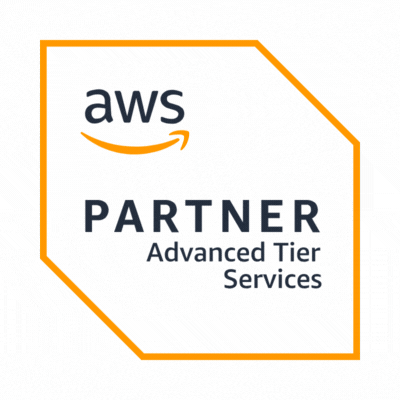As cloud computing continues to dominate the IT landscape, organizations are increasingly looking for ways to optimize their cloud expenditures. Effective cloud cost optimization strategies can lead to significant savings and improved resource utilization.
This blog explores various techniques to optimize cloud costs, including cost allocation and tagging best practices, rightsizing AWS instances, and leveraging reserved instances for cost savings.
Introduction to Cloud Cost Optimization
What is Cloud Cost Optimization?
Cloud cost optimization involves strategically managing and minimizing cloud expenses without compromising performance or scalability. It requires a combination of practices, tools, and methodologies to ensure that cloud resources are used efficiently and cost-effectively.
The Importance of Cloud Cost Optimization
With the global cloud services market projected to exceed $623 billion by 2024, organizations need to implement effective cost optimization strategies to stay competitive. Recent industry reports indicate that companies can save up to 30% on their cloud bills through proactive cost management and optimization practices.
Cost Allocation and Tagging Best Practices
Proper cost allocation and tagging are foundational elements of cloud cost optimization. They provide visibility into cloud spending, allowing organizations to track and manage costs effectively.
Best Practices for Cost Allocation and Tagging
Define a Clear Tagging Strategy
- Establish a comprehensive tagging policy that includes naming conventions and required tags for all resources.
- Tags should include information such as the department, project, environment (e.g., development, production), and owner.
Automate Tagging Processes
- Use automation tools and scripts to ensure consistent application of tags across all cloud resources.
- Implement policies to enforce tagging standards and prevent the deployment of untagged resources.
Regularly Review and Update Tags
- Conduct periodic audits of your tagging practices to ensure accuracy and relevance.
- Update tags as needed to reflect changes in projects, departments, or organizational structure.
Leverage Cost Allocation Reports
- Utilize cost allocation reports provided by cloud providers to gain insights into spending patterns.
- Analyze these reports to identify cost-saving opportunities and optimize resource usage.
Implementing best practices for cost allocation and tagging can provide greater visibility into cloud spending, enabling more effective cost management and optimization. Consistent and accurate tagging is essential for tracking expenses and identifying areas for improvement.
Rightsizing Your AWS Instances
Rightsizing involves adjusting the size and type of cloud instances to match the actual workload requirements. This practice helps eliminate overprovisioning and underutilization, leading to significant cost savings.
Strategies for Rightsizing AWS Instances
Monitor Usage Metrics
- Use AWS CloudWatch to monitor instance performance metrics such as CPU utilization, memory usage, and disk I/O.
- Identify instances with consistently low utilization rates that may be overprovisioned.
Analyze Workload Patterns
- Review historical usage data to understand workload patterns and peak usage times.
- Adjust instance sizes based on these patterns to ensure optimal performance without overprovisioning.
Use AWS Compute Optimizer
- Leverage AWS Compute Optimizer to get recommendations for instance types and sizes based on actual usage.
- Implement these recommendations to achieve a better balance between cost and performance.
Consider Auto Scaling
- Implement Auto Scaling groups to dynamically adjust the number of instances based on real-time demand.
- This ensures that you are only paying for the resources you need when you need them.
Rightsizing your AWS instances is a critical component of cloud cost optimization. By aligning instance sizes with actual workload requirements, organizations can reduce costs and improve resource efficiency.
Leveraging Reserved Instances for Cost Savings
Reserved Instances (RIs) offer significant cost savings compared to On-Demand pricing. By committing to a specific instance type and region for a one- or three-year term, organizations can achieve substantial discounts.
How to Leverage Reserved Instances Effectively

Analyze Usage Patterns
- Assess your long-term usage patterns to identify workloads that run consistently and are good candidates for RIs.
- Use AWS Cost Explorer to analyze historical usage data and forecast future requirements.
Choose the Right RI Type
- Decide between Standard RIs, Convertible RIs, and Scheduled RIs based on your flexibility and commitment levels.
- Standard RIs offer the highest discounts but are less flexible, while Convertible RIs allow for instance type changes.
Mix and Match RIs with On-Demand
- Use a combination of Reserved Instances for steady-state workloads and On-Demand instances for variable workloads.
- This hybrid approach provides cost savings while maintaining flexibility.
Regularly Review and Optimize RIs
- Periodically review your RI utilization to ensure you are getting the maximum benefit.
- Adjust your RI portfolio based on changes in workload patterns or business needs.
Leveraging Reserved Instances is a proven strategy for reducing cloud costs. By committing to long-term usage, organizations can take advantage of significant discounts and optimize their cloud spending.
The Bottom Line
Effective cloud cost optimization requires a multifaceted approach that includes proper cost allocation and tagging, rightsizing instances, and leveraging reserved instances.
By implementing these strategies, organizations can achieve substantial cost savings and improve the efficiency of their cloud environments. As the cloud landscape continues to evolve, staying informed about best practices and industry trends will be crucial for maintaining optimal cost management.
Ready to optimize your AWS costs? Book a cloud consultation session with our experts.




















